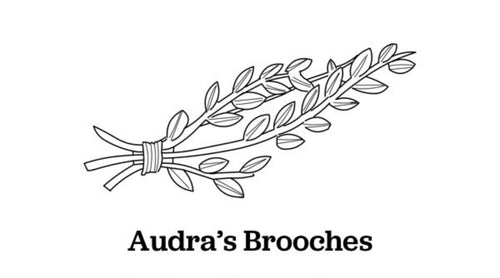
The serene beauty of pearls compliments all styles and fashions. They have been prized for thousands of years.
A natural pearl from a wild oyster occurs in less than 1 in every 10,000 animals and is considered to be one of the most rare jewels in the world.
Kokichi Mikimoto is credited with the creation and development of the cultured pearl industry in 1878. After many years of experimentation he received a patent in 1896. The ubiquitous circular pearl became more accessible both technology and financially.
Most pearls, in fact, 99% of the entire pearl market are cultured. And within this category there are different qualities and values. There are also two kinds - saltwater and freshwater.

Faux pearls (the kind my brooches are made of) have been designed and manufactured for over one thousand years to ensure that everyone can enjoy the gleam, the glamour and the gorgeousness of this magical material. They can be glass or plastic beads coated with an iridescent lacquer, or simulated nylon, acrylic or plastic.
The ancient Romans made faux pearls and the Elizabethans created an artificial pearl industry to supply the fashionable elite.
The Victorians used real and faux seed pearls on mourning brooches to represent tears.

The faux pearls in my 1980s vintage brooches were manufactured in South Korea and Japan. They are dated from the 1970s and represent the best quality of costume pearls. They are made from a glass bead dipped or sprayed with a pearlescent coating.
Gold and pearl is a classic pairing that never goes out of style while silver lends a cool elegance to your look. Winter or summer, pearls are the gem to lift any outfit.

Copyright Audra Daws-Knowles 2022. All mistakes and omissions are the author’s own.
References:
https://www.mikimoto.co.uk/uk_en/brand-story
https://www.amnh.org/exhibitions/pearls/what-are-pearls/imitation-pearls

